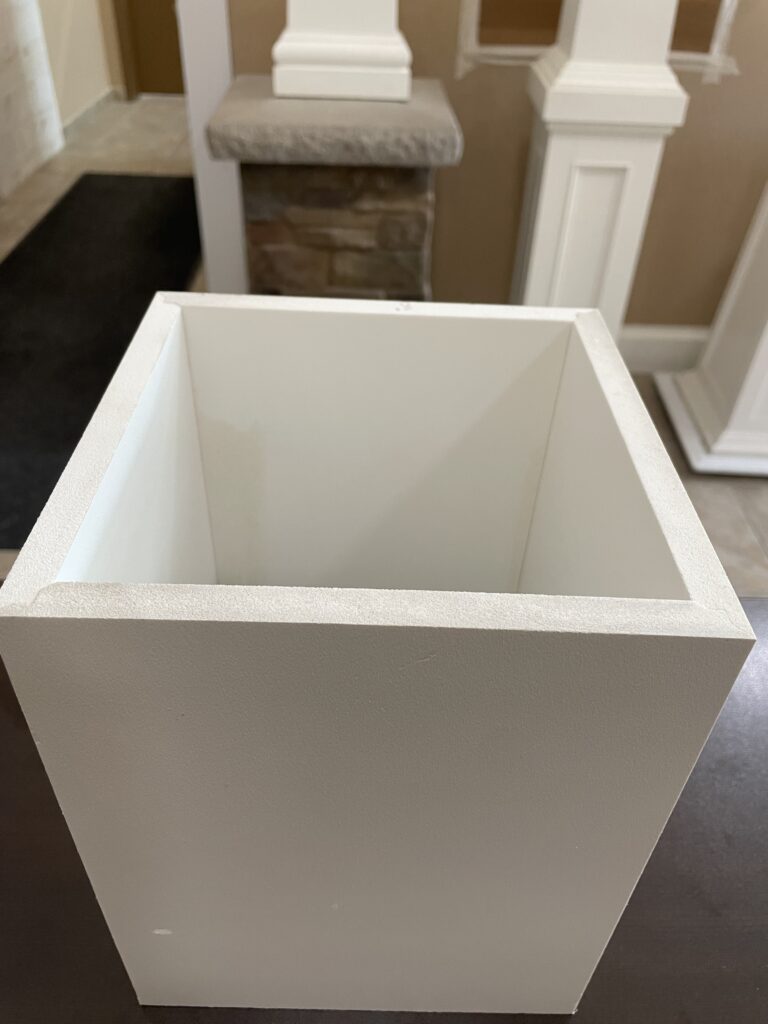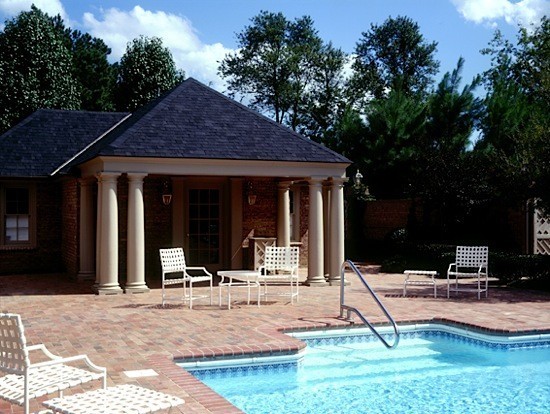Goodbye Wood and Hello PVC and Fibreglass Columns!
Evolution is not a question of why but rather when. Wood has always been a key foundation in human creations. Often lasting for 15-20 years before they start to rot and decay.
The inevitable rotting starts with a wood-eating bacteria named “White-rot.” The rotting occurs due to the high amounts of moisture absorbed by the wood. Living in the Western region of the world it’s nearly impossible to avoid wet climate conditions such as rain, snow, hail and even the rare tsunami.
Now that the science behind why wood rots have been explained, it’s very important to inspect all wood exterior products for signs of decay. If you spot any decay like in the picture above it’s important to replace or wrap them before the structure collapse. When you are ready to take action, the two most suitable replacements for wood are PVC and Fibreglass.
Education about PVC
You may be asking what even is PVC? Great question. PVC is one of the oldest plastics. First synthesized in 1872 by German chemist Eugan Baumann, but PVC (Polyvinyl chloride) was first discovered in 1835. It did not take long for PVC to become a staple figure in everyday life being used in things such as shoes, rubber insulation for wiring, and even early sewer systems. Fast forward 2000+ years and PVC can be found in almost everything such as automotive interiors, medical devices, window frames, fashion, and packaging. PVC has always been durable and long-lasting. It can come either firm or flexible and in its raw material, it’s mainly white colour.
What is a PVC Column
PVC column wraps are made to last a lifetime, they provide you with the look and feel of wood without all the maintenance and decay. PVC column wraps are designed with the intention of wrapping around a load-bearing support post/pressure-treated post. Once applied around the post, the properties of PVC take effect.
PVC has many reasons that make them superior compared to wood wraps, including things such as waterproof, insectproof, durable, easy installation, and low maintenance cost. The negative side of using PVC is it that they do not absorb heat well. To Prevention any UV Discoloration/Distortion PVC should be painted white or light colours.
Education about Fibreglass
Fibreglass has been a house name product since 1938, it has been a key part of our society and is found in things such as clothing, boat hulls, finishing rods and even cars. The creature of Fibreglass was Games Slayter of Owens-Illinois originally a product used for building insulation. The basic raw material of Fibreglass is a mixture of natural minerals and manufactured chemicals. Key things such as silica sand, limestone and soda ash, for strength the Fibreglass things such as borax, feldspar, magnesite and calcined alumina and many more. To create such load-bearing structures a process called batching (mixing together) occurs: melting the glass and other raw materials. Once that process is done and refined, Fibreglass can be as thin as fishing wire and strong enough to stop a bullet, depending on the properties involved.
Fibreglass initially was a product used for buildings as its first purpose was insulation to provide warmth during winter. The properties of Fibreglass include things such as lightweight, durability and sturdiness. The material is very unique as it is very light but very fragile compared to things such as carbon fibre. While compared to metal, it is as bulky in strength and weight but with an added bonus of Fibreglass being much more flexible. Fibreglass is part of many home products that you are not even aware of such as drywall tape, flooring and windows.
What is a FIbreglass Column?
Fibreglass columns have many pros such as stability, moisture resistance, high strength/load bearing, fire resistant and chemical resistance, and non-rotting capability. They are sturdy and still manage to look great, coming in more styles than PVC column wraps do.
With every great product, there are some flaws even though it is moisture resistant; some composites’ moisture can harm and even destroy Fibreglass insulation as the moisture sits in the fibre of Fibreglass mold starts to form and can cause smell and decay. Luckily, this is not the case for our Fibreglass columns as they are created to ensure they withstand moisture, weather and even insects.
Fun Fact: Did you know Fibreglass was originally named glass fibre then later changed to Fibreglass
Fibreglass VS PVC
Both PVC and Fibreglass share some common similarities such as they don’t rot or decay because they are human-made and not natural materials. They both also are both water-resistant, durable and low maintenance.
The main difference between PVC and Fibreglass is the load-bearing capacity, both are very resistant and hard to break depending but only Fibreglass can be load-bearing and can hold up weight and support heavy structures.
PVC and Fibreglass are some of the keystones of human civilization that have played an integral part in our day-to-day life without us even knowing. Both have provided humanity with great technological advances allowing the next generation evolutionary advantages.
Most importantly though, they have both become main components in architectural details when it comes to improving the look of your home. Whichever one you choose will help your place stand out and draw the eyes, creating a style that you can be proud of.







